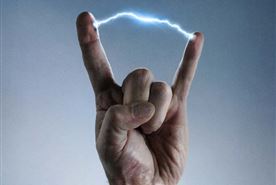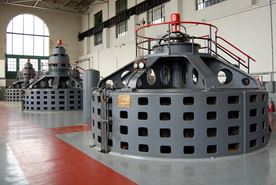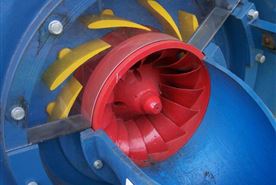Hydroelectric Energy
Verb
cause to change in form or function
Albert Einstein gave the twentieth century’s most famous equation E=MC2. It means that small amounts of mass can be converted into huge amounts of energy.
Noun
changing the direction or use of something
The Imperial Diversion Dam was completed in 1938 along with the All-American Canal, a massive man-made river which runs over 80 miles just north of the California-Mexico border, to irrigate California's huge Imperial Valley.
Noun
form of energy that is carried through wires and is used to operate machines, lights, etc.
Chelios faces a Chinese mobster who has stolen his nearly indestructible heart and replaced it with a battery-powered ticker that requires regular jolts of high-voltage electricity to keep working.
Noun
machine that converts one form of energy into another
The dams create strong water flows which move turbine blades that turn the rotor of an electric generator. When the coils of wire on the rotor sweep past the generator’s stationary coil, electricity is produced.
Verb
control and make use of (natural resources), especially to produce energy
The new Ocean Health Index is meant to give countries a quantitative measure of how well they harness and maintain the benefits of their coastal territories.
Adjective
of or relating to the production of electricity by waterpower
Hydroelectric power is a timeless, renewable resource that has fuelled Ontario's economic growth since the beginning of the twentieth century. Today, OPG operates 65 hydroelectric stations on 24 river systems.
Adjective
of an energy source, able to be replaced by nature
Hydroelectric power is a timeless, renewable resource that has fuelled Ontario's economic growth since the beginning of the twentieth century. Today, OPG operates 65 hydroelectric stations on 24 river systems.
Noun
part of a machine that turns around a central point
The dams create strong water flows which move turbine blades that turn the rotor of an electric generator. When the coils of wire on the rotor sweep past the generator’s stationary coil, electricity is produced.
Noun
engine that has a part with blades, caused to spin by pressure from water, steam, or air
turbine
The dams create strong water flows which move turbine blades that turn the rotor of an electric generator. When the coils of wire on the rotor sweep past the generator’s stationary coil, electricity is produced.
The dams create strong water flows which move turbine blades that turn the rotor of an electric generator. When the coils of wire on the rotor sweep past the generator’s stationary coil, electricity is produced.
Noun
force of an electrical current that is measured in volts (units electromotive force)
Chelios faces a Chinese mobster who has stolen his nearly indestructible heart and replaced it with a battery-powered ticker that requires regular jolts of high-voltage electricity to keep working.









